At the very top of California, far from the population centers the state is known for and surrounded by the oldest redwoods in the world, lies the little community of Smith River. Like so many small towns in the United States, it flashes by in an instant—a drive-through coffee shop in the lot of a now-abandoned supermarket; the remains of a BBQ joint, its neon martini glass permanently empty; glimpses of a church, a corner store, Lolita’s Taqueria, farming fields and then, for all intents and purposes, it is gone.
Of course it is not, really. Tucked away from the highway, kids on quiet streets as pretty as any in America play basketball in their driveways, ride bikes past the grade school, with its cream paint and blue trim. Alongside the Pacific and north of the mountains that hug the area on two sides, a few of the community’s 1,000 residents live in expansive homes. Elsewhere trailers cluster at the ends of long dirt roads.
Mostly the area is known for the redwoods and the Smith, the wildest and cleanest river in the United States outside Alaska, with copper in the ground giving it a gorgeous azure hue.
But in this community and just across the border, four family-owned farms produce 99 percent of the Easter lily bulbs sold in North America—over 10 million lilies a year. Most will be bought in the next few weeks by Christians, for whom the flower has come to symbolize new life.
And that is appropriate in ways beyond what we might realize; for the families who raise Easter lily bulbs find themselves in their own struggle to continue while facing not only the unique challenges of growing lily bulbs but of roundworms, lobbyists and the relentless creep of Big Box America.
Much like the feast it helps us celebrate, the Easter lily has its own remarkable story of a happy faith that persists in the face of many reasons to turn away.
The Perpetual Student
When he meets me at Hastings Bulb Growers fields, where he has worked for over 40 years, Harry Harms wears a pastel green button-up work shirt, blue jeans and a warm grin. He looks like a happy grandfather, the one kids love to visit for his fantastic stories and maybe a sweet.

A dented, green steel thermos in hand, he walks me around the farm his son Zeke now runs. I have arrived at a busy moment; millions of bulbs are about to be dug up. But if that is a problem, Mr. Harms never shows it. He has a natural enthusiasm about him; as we talk through every aspect of lily farming, from the three years that lily bulbs must spend in the ground to business strategies, he frequently reaches out to touch my hand and draw my attention to details of the farm, as though to say, “Can you believe how great this is?”
Originally a farm kid from Orange County, Mr. Harms remembers his childhood as idyllic. But as the area grew congested, he longed for a way out. “The day I was going to Irvine and it was 6 in the morning and it was a traffic jam, I said, ‘I’m out of here.’” After college he and his wife moved to Hawaii. He worked what had been sugar cane fields, helping transform them into feed corn for local farms.
“It was an incredible grind,” he recalls. “It was harvest, it was planting, it never stopped. I went from being poor to having a bankroll, but it wasn’t a life.”
The wetter weather of Northern California appealed to him. “I wanted some days off,” he admits, laughing. “I wanted a time when it was going to rain enough that I knew we couldn’t work.” The Hastings Easter lily business, which he would join first as an employee and later as owner, was also thriving. “I’d never been in a farm in my life that was as well-kept and clean and painted and as well-serviced.”
But what really drew him, and what is most striking talking to him 40 years later, is the constant education that is Easter lily farming. “Frankly, corn is pretty easy. It’s a matter of keeping everything going and putting the hours in,” Mr. Harms said. “This was more of a chess game and a poker game and a thinking man’s game. It was just so much more interesting to me to try to do something like this for the rest of my life.”
Betting on Bulbs
It takes an astonishing three years to grow the Easter lilies that will adorn our altars and front rooms. They begin as small white “scales,” leaves of other bulbs with the shape of a small artichoke leaf and the slick texture of a slice of onion.
Each year Hastings and the three other lily bulb farms plant millions of these scales in their fields, with the hope that 80 percent will survive 13 months of weather and pests to become viable bulbs. After being cleaned and sorted by size, those bulbs will be replanted for a second year, and then again for a third, each time in new fields freshly treated with chemicals. In the end, each farm hopes to produce two to three million bulbs up to eight or nine inches in circumference.
The long growth period of lilies is in large part a function of consumer preference. Lily bulbs actually flower every year; removing the buds from the plants in the summer months is one of the many manual processes involved in lily bulb farming.

But customers today want at least five flowers, and generally no more than seven; ideally, the farmers say, you can get one bloom for every inch of bulb circumference. In practice you tend to need closer to eight inches to get to five blooms. Hence the three-year wait.
Weather in the area is remarkably consistent—40 to 60 degrees in the winter, 50 to 70 degrees in the summer, and wet, with an average of 75 inches of rain a year. That stability is one of a number of reasons the Easter lily business has continued to thrive here while the many other lily farms that used to populate the West Coast have died away.
What is not consistent, though, is the date of Easter. Depending on the year’s calendar, there may be five months between the harvest and Easter Sunday. Most farms sell their bulbs through brokers to independent greenhouses who will bring the plants to bloom; before that, the farms will package their bulbs in peat moss and store them for 1,000 hours in the dark in massive coolers. “We trick them into thinking they’re still in the ground,” which delays their bloom, Mr. Harms explains.
After being shipped to greenhouses all over the country, the bulbs will be subjected to an ongoing variation of heat and cold to cause them to bloom not only at precisely the right time but to the right height. Where once people preferred 26-inch lilies, today the standard is 24 inches, explains Mr. Harms, “and it’s almost moving down to about 20, 22.” The height is not just a matter of consumer taste; a shorter plant means a smaller box, which allows a greenhouse to ship more plants in one truck.
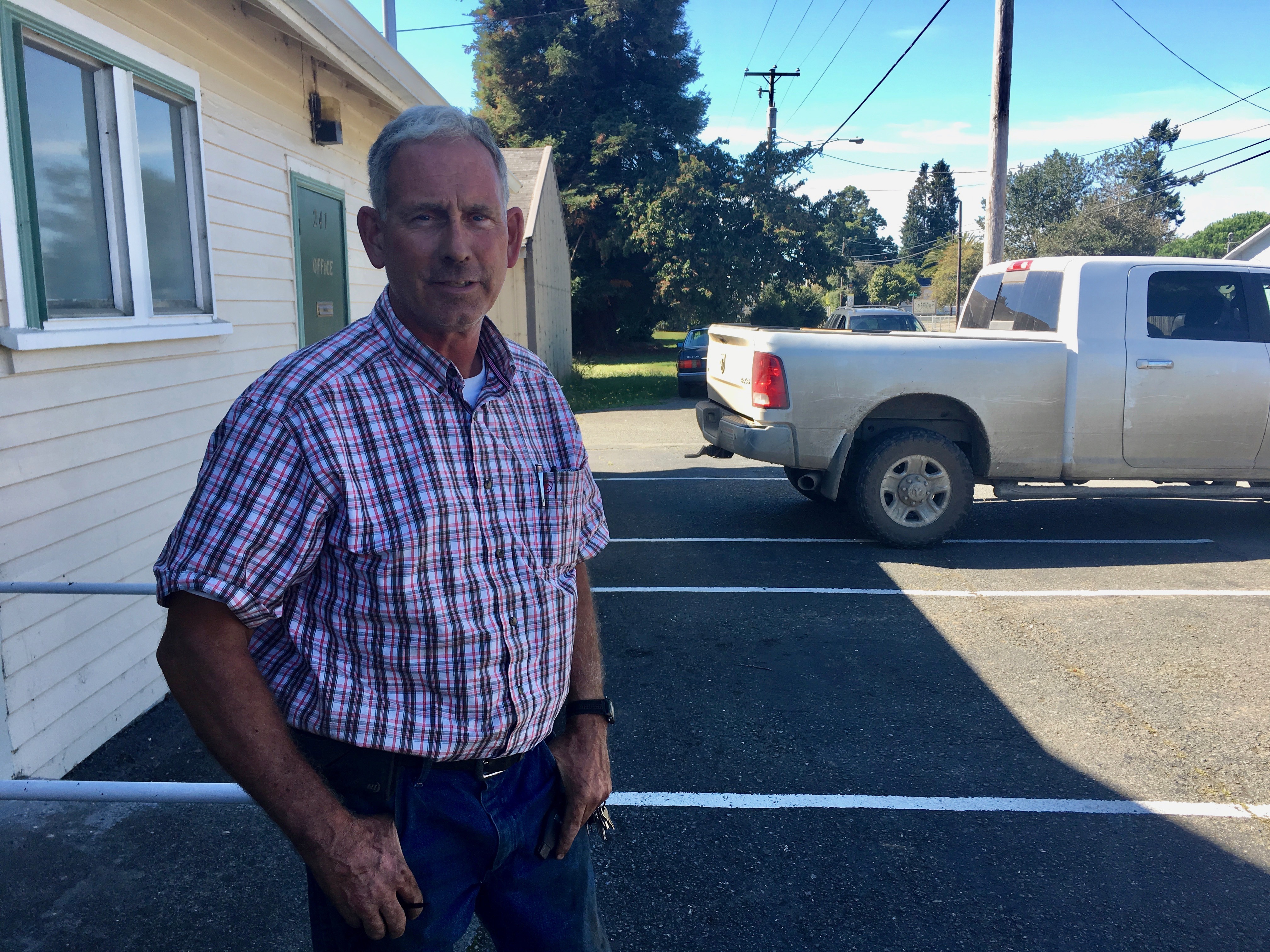
Mr. Harms and his fellow bulb farmers have nothing but praise for the greenhouses with which they work. “It’s one of the most complicated crops that a greenhouse grower grows,” says Rob Miller, who runs Dahlstrom & Watt Bulb Farm. “Chrysanthemums, poinsettias or a lot of greenhouse crops, they’re absolutely programmable. Lilies respond to stimuli, but they are not programmable.”
Lilies are one of the most complicated crops that a greenhouse grower grows.
Still, staying in touch with the greenhouses is a must; if something goes wrong there, if they so much as mix bulbs from two different fields, some plants will fail and both the greenhouses and the farms’ business with flower sellers will suffer.
When he started, Mr. Harms says, greenhouses “used to brag they’d marketed 75 percent of the bulbs they bought. Well, now guys plan on marketing 95 percent, and they’re not very happy unless they can hit about 97, 98 percent.” The farmers must grow and sell a higher percentage of perfect bulbs to the warehouses to meet these goals.
Improv Farming
Surrounded by lily bulb fields in the town of Smith River lies a small cemetery. It is quiet here, and picturesque. Forest green mountains rise in the distance. A hawk glides overhead on the wind currents.
The largest among the graves, with a striking statue of a young woman looking to heaven, belongs to Henry Westbrook. Born in Germany in 1830, he moved here in 1847 and went into dairy farming. Grass grows in Smith River pretty much year-round, making it a perfect place for cattle. The dairy’s butterfat milk sold like gangbusters in San Francisco.
Westbrook’s grandson, also named Henry, helped pioneer the area’s Easter lily business in the 1940s. And today the younger Henry Westbrook’s grandsons run Palmer Westbrook, which includes lily bulb fields, a dairy and a production facility for certified organic beef.
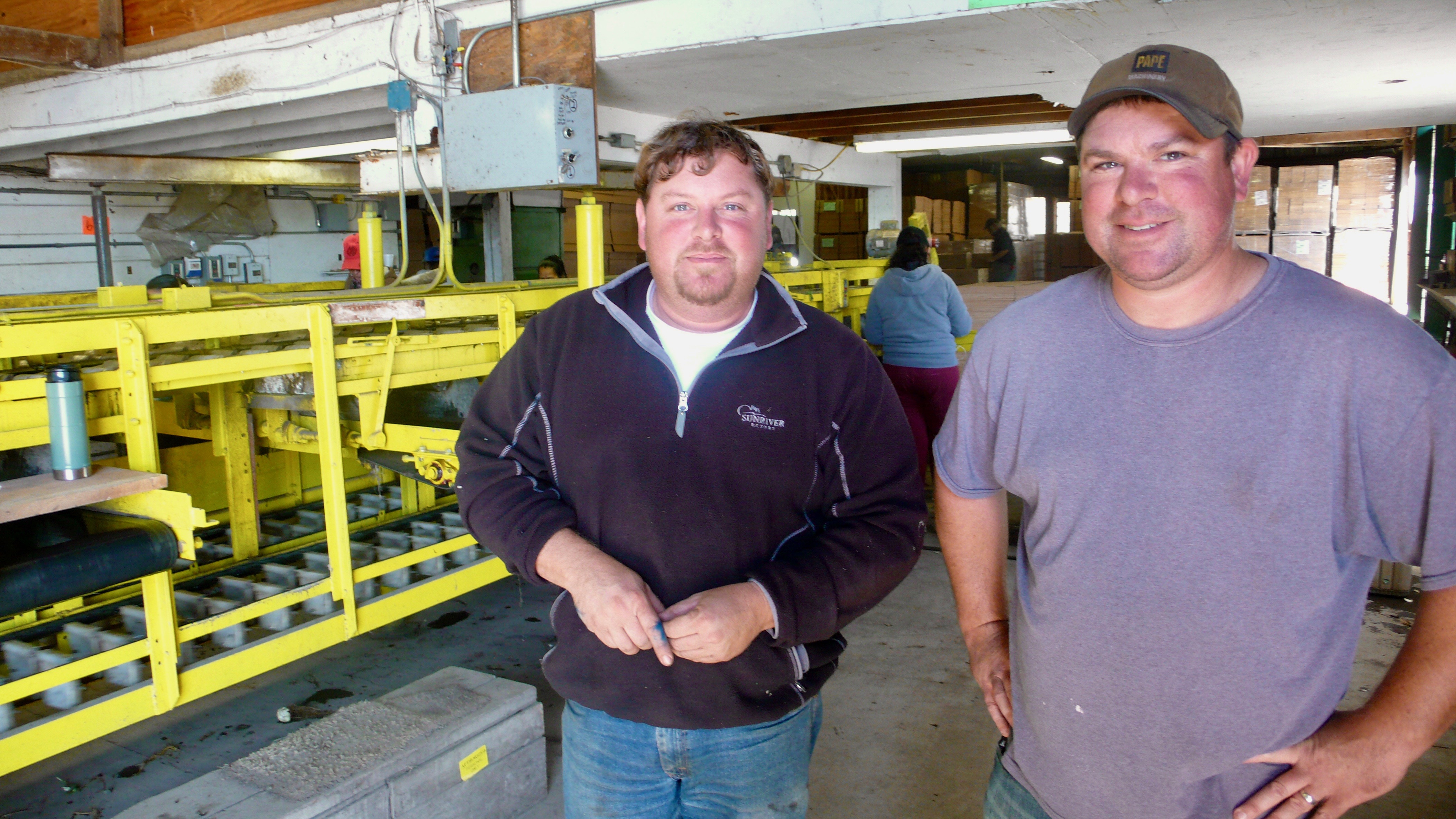
Will and Matt Westbrook, along with Zeke Harms at Hastings and Leilani Crockett at Crockett United Lily Growers, represent the next generation of lily bulb farmers. Will has recently entered his 40s, but he seems younger than that. Frequently wearing a baseball cap, the bill folded sharp to offer shade for weathered skin, he often describes the challenges of the work as “fun.” “Sometimes the business side I don’t like so much, but there’s tractors to play on,” he says, cracking a grin.
When I visit Palmer Westbrook, the shed where they clean and organize the lily bulbs for packaging or replanting is filled with life—the clack of equipment, the hum of workers’ conversation, an occasional work bell. The floorplan has the feel of a game of Mouse Trap, each successive step building on the last, yet much more improvised and ingenious than any factory. The Easter lily industry is so small that no one sells equipment designed for it; everything has to be repurposed from other businesses or designed from scratch. The conveyors that bounce the bulbs along via belts and water are old strawberry washers. The blue-tarped, old-timey mechanical creepers that move through the fields, carrying eight men and women lying on their stomachs as they weed and plant, are hand-made and hand-maintained.
Even standard equipment like tractors is rarely purchased new. “We used to buy a new one every year,” Mr. Westbrook tells me. “Now they’re like $200,000. Nobody can buy a new one any more.”
The Easter lily industry is so small that no one sells equipment designed for it.
There is no small amount of stress that comes with that kind of constantly improvised set-up. But there is great pride here too. Maria Reyes has worked in Smith River for 40 years. Some of the work is not easy at her age, she admits. “But I work anywhere!” she adds, patting her ropey arms.
As Mr. Westbrook walks me through the shed, he talks of how his father and grandfather designed the place, even designing special, hollowed-out walls that make it easier for the packers to shift back and forth between bulbs and moss.
He has the same hunger for creativity himself. He watches YouTube videos of Dutch bulb production lines looking for ideas, and describes with delight the thousands of varieties of bulbs they have bred, the different depths of planting they have tried, the different fertilizers, the different types of hills so as to maximize the movement of water (and with it, oxygen) through the soil—all to produce the most and the best bulbs.
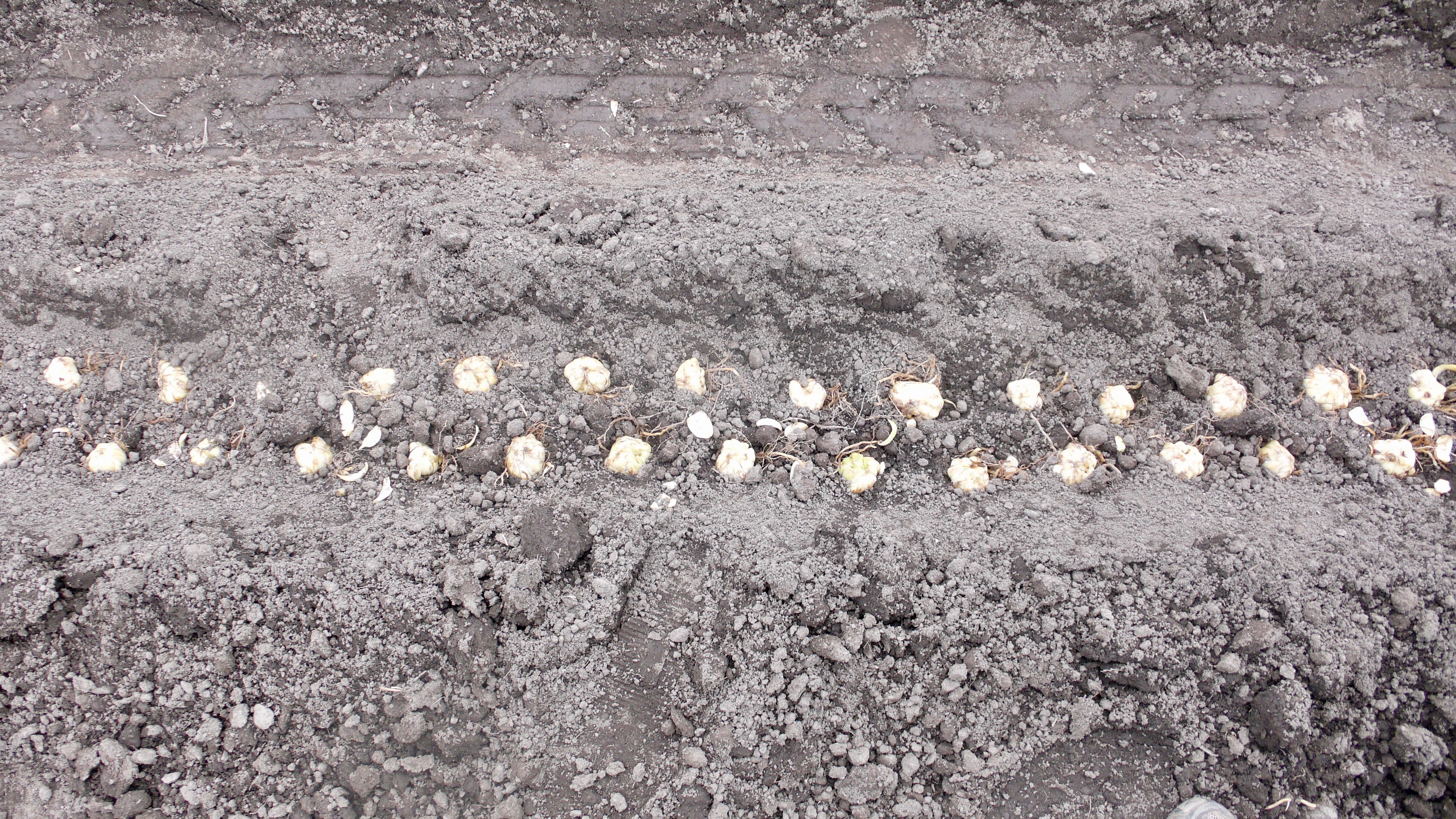 “Nine times out of ten or more,” he admits, these experiments do not make a substantial impact. When it comes to lily bulb farming, “there are things you can do to help yourself, but most of it is out of your control.”
“Nine times out of ten or more,” he admits, these experiments do not make a substantial impact. When it comes to lily bulb farming, “there are things you can do to help yourself, but most of it is out of your control.”
“But in some sense it’s kind of fun,” he says. “You might as well just laugh, there’s nothing you can do.”
He stops a beat, then shoots me another grin.
“But in other senses it can drive you nuts. Because there’s nothing you can do!”
Of Persistence and Resistance
Among the many challenges the lily bulb industry faces today, a few stand out. The first is the neverending task of dealing with the fungi, diseases and pests that plague lily bulbs. Consider just one, the nematode, otherwise known as the roundworm. Nematodes live as parasites within many forms of life, from sperm whales to human beings. (The tapeworm is a nematode.)
Easter lilies have no natural resistance to nematodes. And the microscopic worms, which feed not only on lily bulb roots but on the clover that also thrives here, are nearly impossible to eliminate. In one experiment, a University of California, Davis, nematologist kept some soil clear of vegetation for four years. Still the pests persisted.
Among the many challenges the lily bulb industry faces today, a few stand out.
Left in the dirt 13 months at a time, with the use of pesticides to kill nematodes possible only once a year prior to planting, the bulbs are sitting ducks. The farmers have tried endless ways to thwart them. “We’ve tried long-term rotation of crops,” Mr. Harms tells me. “We’ve tried steam treatment on fields, which is not even remotely economical; we tried all kinds of heat treatments to cook them out of the roots. We’ve tried taking large amounts of sea produce, like sea shells, that exude a chemical that is supposed to reduce nematode population.
“We’ve had whole fields full of a marigold which exudes the actual chemical we use; one year it doesn’t work because they don’t produce enough, one year it works great because they grew and produced the right amount, and the next year it’s so much that it actually damages my crop.”
“That’s one of the problems with an organic application,” Mr. Harms explains, “getting predictability into the system. With a chemical application, I can learn to put it on a certain way at a certain rate and I can have a predictable response every year.”
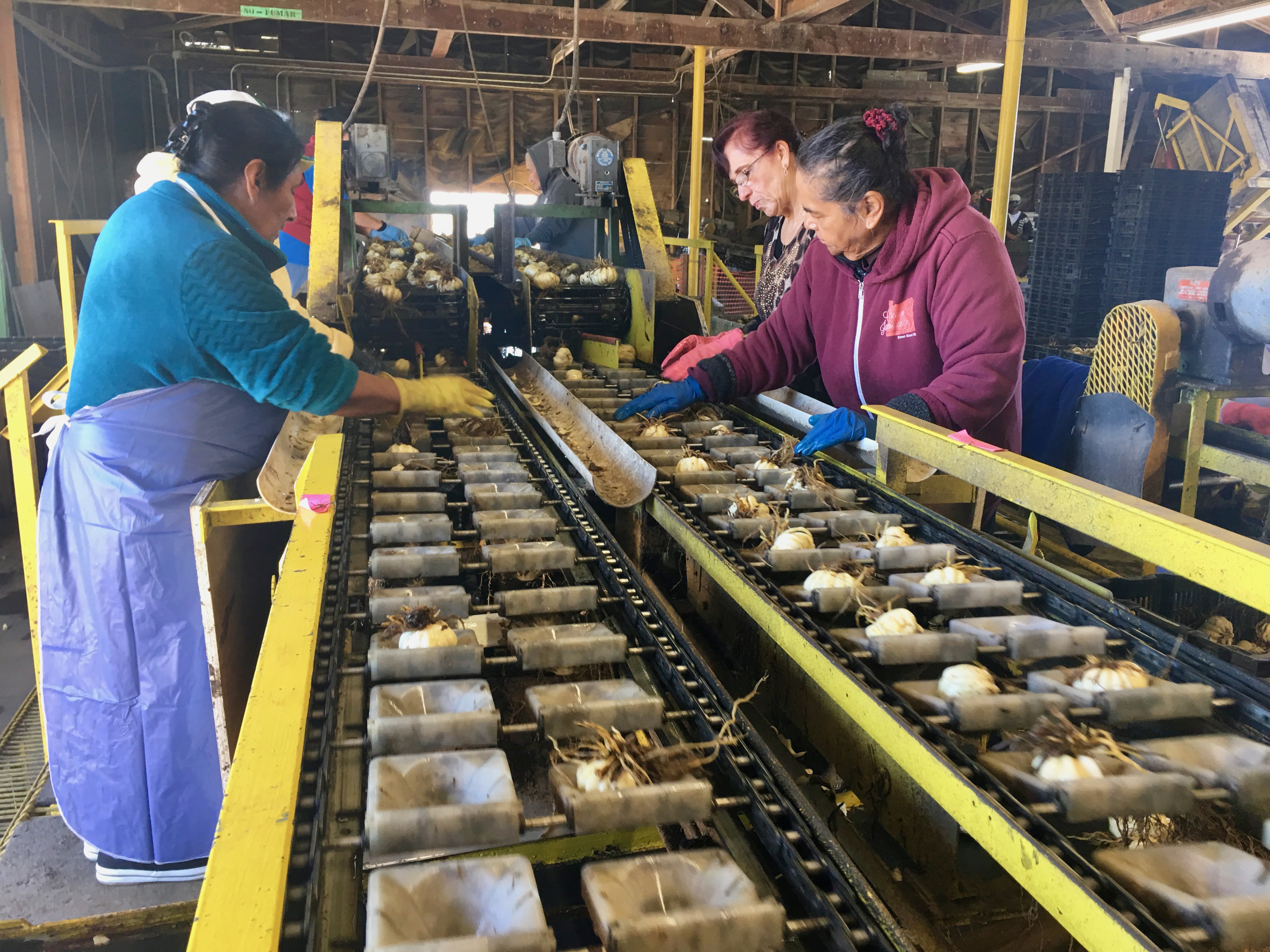 The question of organic versus chemical pest control constitutes a second major struggle in the industry today. For the last 16 years, the local Siskiyou Land Conservancy has pressed the farmers to go organic, claiming that the pesticides they use are harming both the natural environment and the residents of the community. In 2016 the organization conducted a nonscientific survey of residents and uncovered worrying anecdotes about health problems.
The question of organic versus chemical pest control constitutes a second major struggle in the industry today. For the last 16 years, the local Siskiyou Land Conservancy has pressed the farmers to go organic, claiming that the pesticides they use are harming both the natural environment and the residents of the community. In 2016 the organization conducted a nonscientific survey of residents and uncovered worrying anecdotes about health problems.
It is a compelling narrative: the Easter lilies you love may be hurting people. But after all these years, hard scientific data has yet to support the Land Conservancy’s claims. Like all agricultural endeavors, lily bulb farms are regularly evaluated by a variety of regulatory agencies. The State of California has the strictest pesticide regulations in the country, stricter than those of the federal Environmental Protection Agency. “We’re a state that produces a lot of fruit and vegetables,” says Charlotte Fadipe, assistant director for the California Department of Pesticide Regulation. “I think I read somewhere that if you’re eating fruit and vegetables in America, something like 60 percent on your plate comes from California. So we have to be very careful about the rules.” (The most recent statistics show California produces over a third of the nation’s vegetables and two thirds of its fruits and nuts.)
The state has found no evidence of lily bulb pesticides harming local people. After the Land Conservancy released its survey, the pesticide regulation department’s scientists took new samples. The results were once again fine. “They showed most of the pesticide levels were so low,” Ms. Fadipe says, “they could not even be detected.”
The state has found no evidence of lily bulb pesticides harming local people.
Siskiyou Executive Director Greg King does not accept these findings. When pressed, he also admits he opposes agricultural pesticides as a practice. “We believe and understand that most pesticide use is unnecessary and destructive.”
For their part, the families insist they are willing to change if their pesticides are determined to be causing harm. As they are quick to note, these issues affect them, their families and their workers, too. “I’ve lived my whole life around the lilies,” notes Linda Crockett, who has worked at and then co-ran Crockett United Lily Growers for almost three decades. “My house is in the middle of the ranch. I’ve been there 20 years.”
Big-Boxed Out
A wiry man with hands textured by decades of farming, Mr. Miller speaks with a restless energy as he describes the third major challenge of lily farming today. Despite the fact that these four farms constitute nearly the entirety of Easter lily sales in the United States and Canada, “Everyone’s margin has become paper thin.”
Part of this is due to the ever-increasing cost of labor. Unlike many industries today, Easter lily farming remains remarkably labor-intensive, as the yearly planting, disbudding, packaging and weeding of these tens of millions of bulbs all must be done by hand. Still, the farmers do not seem eager to change their lot. They tell stories of the barbecues they have with their workers and the quinceañeras they attend. “The guy driving the forklift has probably been here for 30-something years,” says Mr. Westbrook. “Another guy 25 years, his cousin same thing. It feels like a family.”
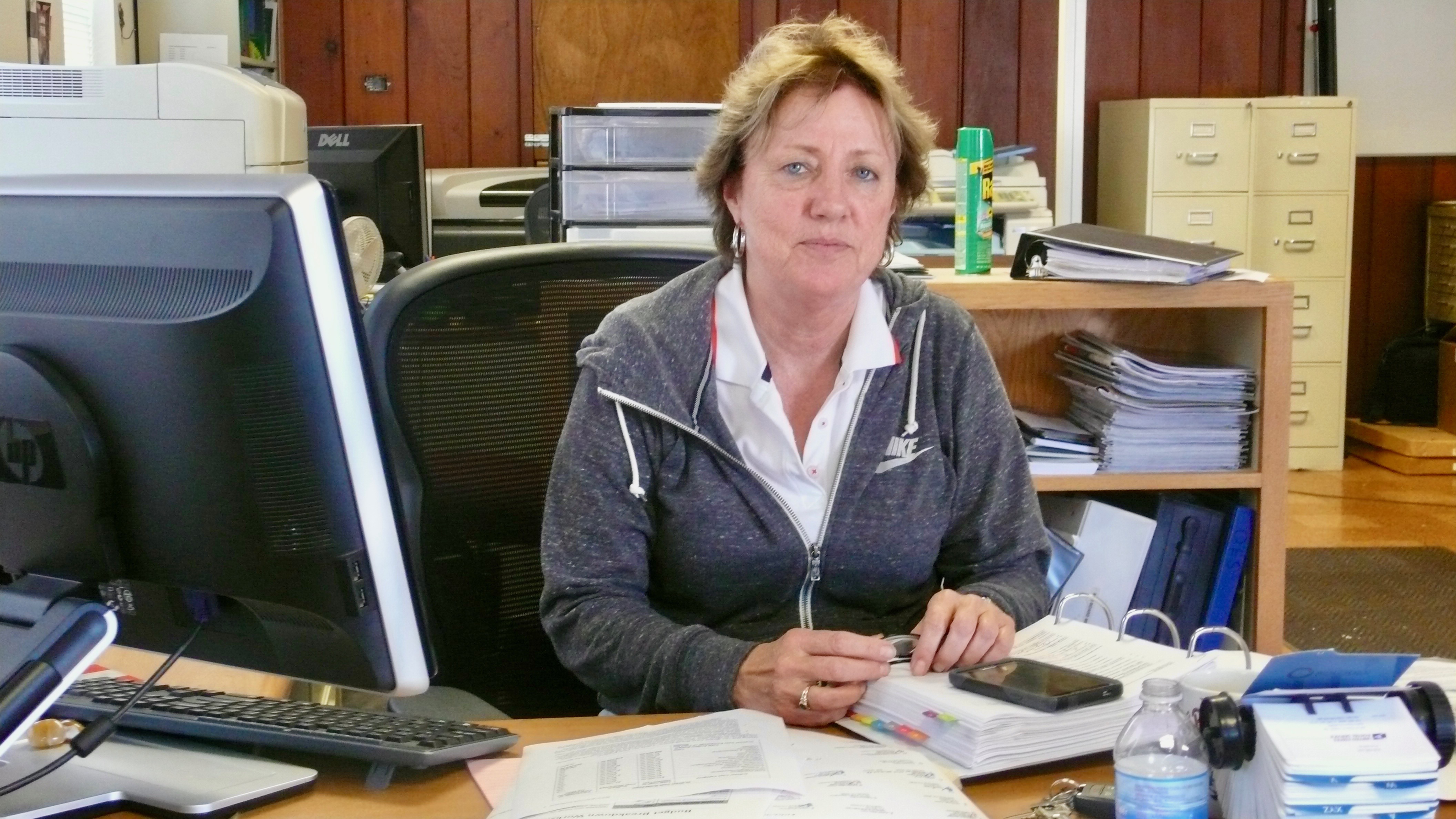
Ms. Crockett, a stylish, athletic woman with short blonde hair who now runs the Easter Lily Research Foundation and a variety of other agricultural organizations for the area, fondly remembers years spent working the fields with her employees. “I wanted to be with the people, and I wanted my workers safe,” she says.
But the heart of the problem lies in the pricing of lilies, which is set by the big box stores. “Bulb [price] has gone up maybe 20 percent over the last 20 years,” says Mr. Westbrook, “maybe 30 percent. But your costs have gone up like 100 percent, or 150 percent, probably even more.”
One farmer tells the story of a major bulb buyer who approached three of the biggest players in Easter lily sales, proposing a one dollar increase in retail price. Their research indicated it would not affect sales. Would they agree to try it?
Two said yes. But one said no, so the situation remains the same. “The chain stores are controlling the profitability of the majority of the flower industry,” says Mr. Miller. “And it’s tight. You can’t imagine how tight it is.”
The work is hard. It is unpredictable. You have to be good at 100 different things.
Could they get priced out of their own market? “Oh you very well could,” says Mr. Westbrook. “We’re probably getting close to it.”
“Everyone who used to do lilies had a big house and a fishing boat,” he remembers. “My dad built a tennis court when I was a kid, swimming pools. I mean, they were killing it.”
He smiles and shrugs. “Well, that’s over. What are you going to do?”
Mr. Westbrook means the question rhetorically, but after a week here I wonder the same. When I ask him what advice he might give someone interested in getting into the business, he says he would tell them not to do it. “To be a bulb farmer these days, you’ve got to be a little bit nuts. Why would anybody want to do this?”
And yet he is laughing as he says this. After describing the business as “brutal,” Mr. Harms, says, “I also run RV parks, rentals, and it’s not [as] gratifying.”
These farms represent generations of their families’ lives. Today they are family to each other, too. “When I first started,” remembers Mr. Westbrook, “it was a lot of jockeying for position. [Everyone] was doing whatever to get a little more market share—whether they pack a bigger bulb or they use different brokers, or they go out wholesale.”
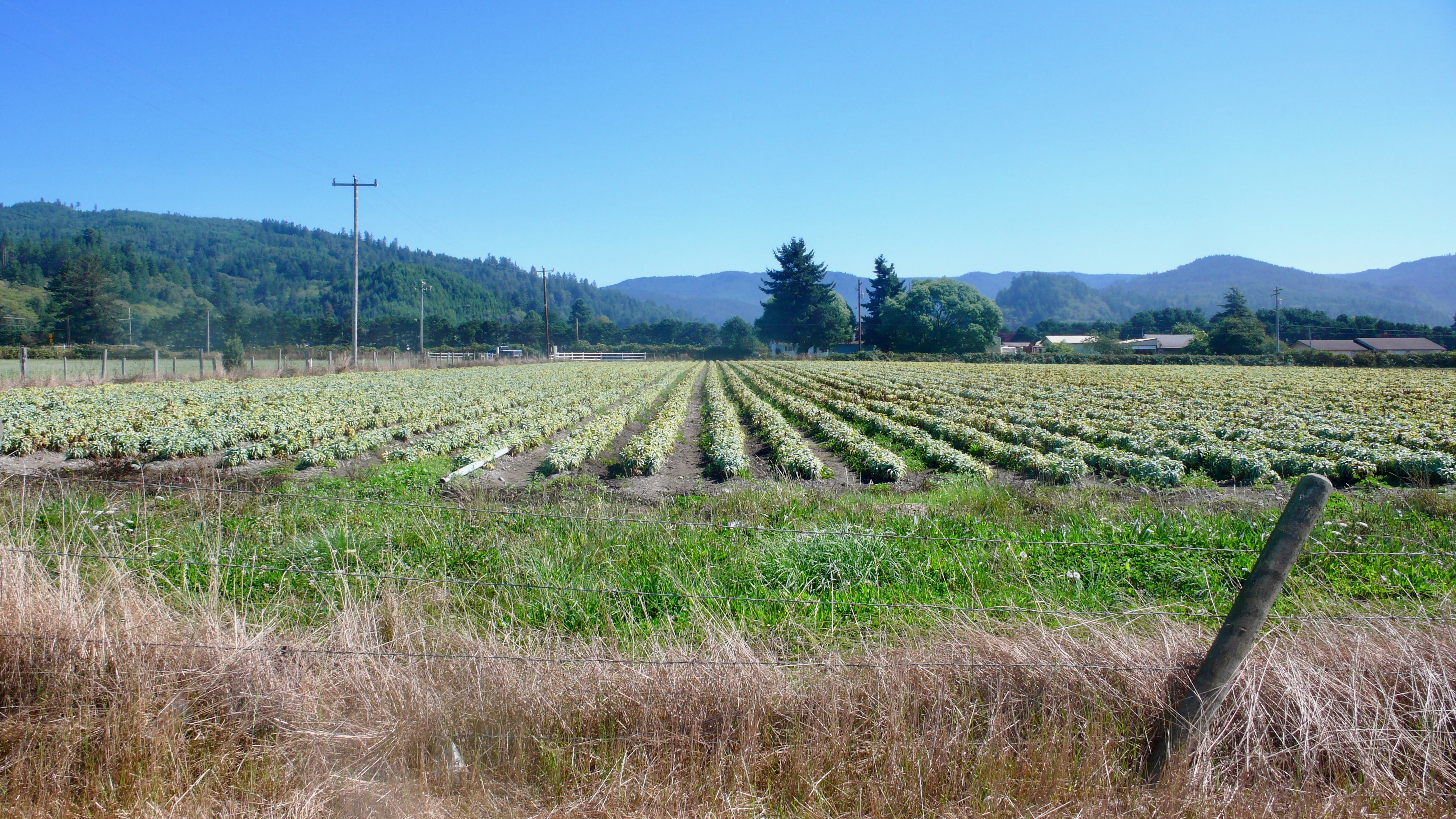 Now, he says, with the business down to just these four families, “We’re all in the same boat. Everybody always helps each other. Somebody’s farm burns down or truck turns over, you’re always going to help. But it seems like it’s a little easier to communicate.”
Now, he says, with the business down to just these four families, “We’re all in the same boat. Everybody always helps each other. Somebody’s farm burns down or truck turns over, you’re always going to help. But it seems like it’s a little easier to communicate.”
In the end what keeps these families in this business seems to be the same things that burden them. The work is hard. It is unpredictable. You have to be good at 100 different things. You have to improvise.
“Every harvest I did was never the same,” says Ms. Crockett. “There was always some big issue to overcome. But I enjoyed the challenges.”
“Farmers are funny people,” says Mr. Miller. “They get a kick out of things that lots of other people don’t understand. I’ve enjoyed the crop all these years. There are no experts in this crop.”
“We’re either very tenacious or very stupid,” says Mr. Harms, “and for the life of me I can’t tell which.”
Mr. Westbrook’s grandparents were weekly service-goers at the local Methodist Church. With a business to run and kids to get to sports on the weekend, he does not get to services as often. But his life, like those of his peers, says much about what it is to be a person of faith. God, he speculates, “must like lilies. He lets them grow in the best place in the world.
“And I don’t know why he let me do it,” he says, with happy wonder. “But here I am.”

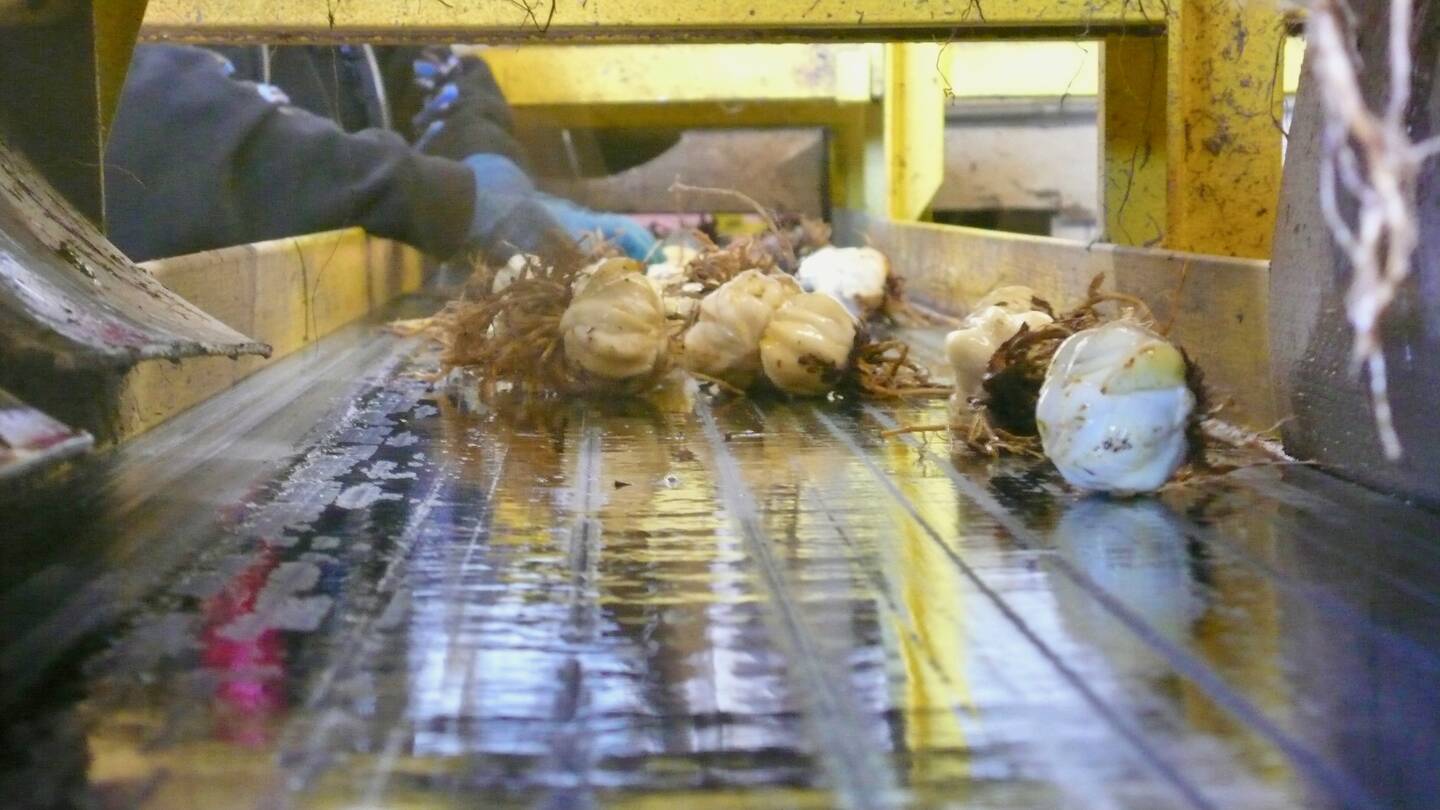









Here’s something I am sure none of the Jesuits at America know (should be a question on Jeopardy). Avery Cardinal Dulles SJ coat of arms as a prince of the church contained a lily. The Vatican philologists thought “du - lys” would be “bon mot”.
Yes, the remarkable life of the Easter Lily by Mr. McDermott is truly remarkable for a number of reasons and a very interesting read. For me one of the remarkableness of the Easter Lily is its need to stay three years in the ground before its "resurrection" to its "new life" of usefulness happens. I see something of a connection between the Easter Lily's behavior to Jesus' "in the ground" three days to Resurrection which the Easter Lily commemorates. Far fetched? Well yes, somewhat. But interestingly Albert Einstein once said, "With God there are no coincidences," making me wonder is there, or isn't there coincidence, in the Easter Lily now recognized as the Easter Flower, commemorating the Resurrection of Jesus? Learning this through reading Mr. McDermott's revelations is for me like hearing the angelic assurance to the women at the Tomb, "He is not here, He has risen!"